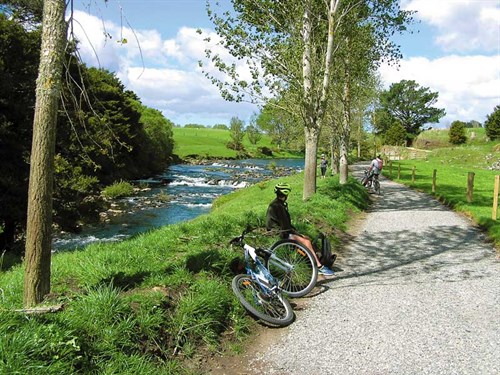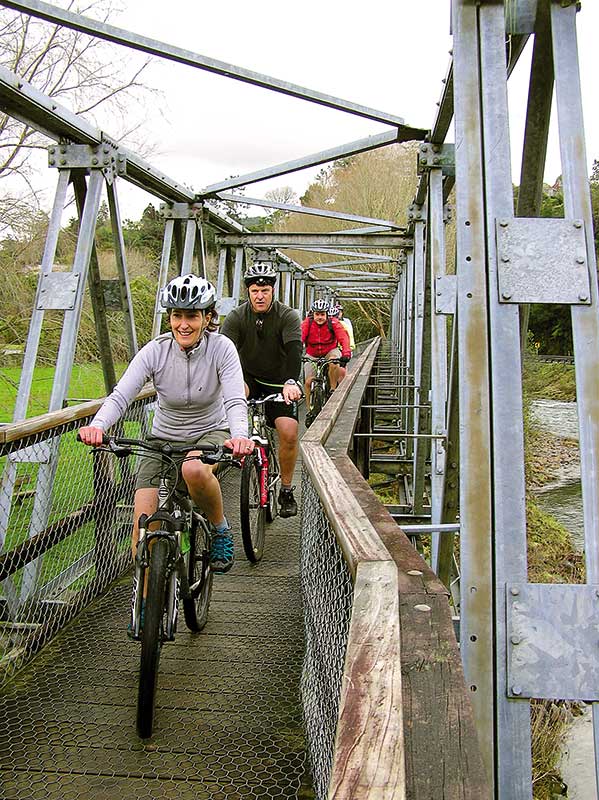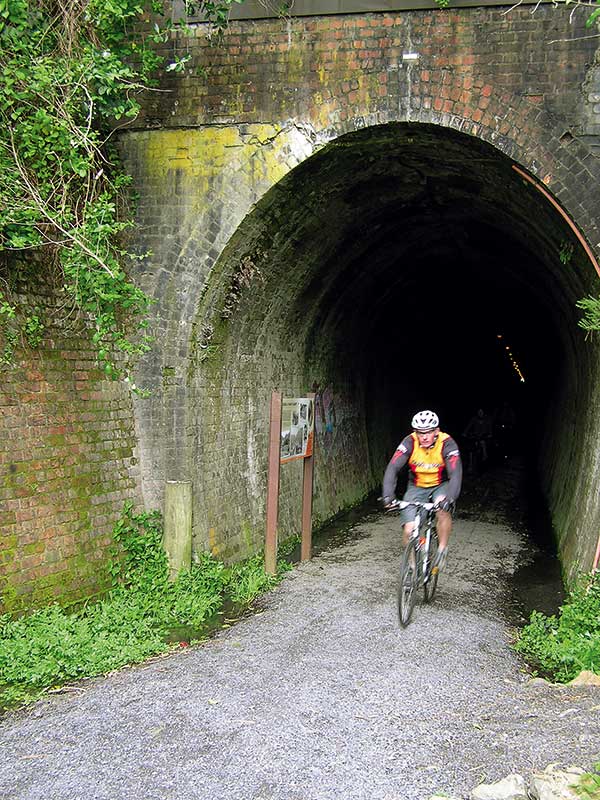In our rural gold-mining hometown of Waihi, my 11-year-old son pipes up during a ritual school holiday game of annoy-the-mother, “Let’s cycle the Hauraki Rail Trail!”
Childhood memories come wheeling back and before I know it, I’m agreeing.
The first of seven potential quick-start trails to steam out of the station on Nga Haerenga, the government’s national cycleway project, the Hauraki Rail Trail follows the historic railway line from Thames to Paeroa and Waihi to Te Aroha. Largely flat, it boasts of being New Zealand’s easiest trail. I’m quite likely New Zealand’s least-fit cyclist, so we appear to be made for each other.
Exiting Waihi on borrowed bikes (there’s the hint of an old bike under the cobwebs in my shed, but only the hint) at the end of Lawrence Road, we take the trail north along the banks of the Ohinemuri River.
Once traversed by steam locomotives hauling ore from the Waihi gold mines to the Victoria Battery 10km away in Waikino, the trail chugs past old bridge abutments hand-carved into the riverside rock and a masonry (brick) dam.
Like most industry at the time, the battery was an environmental disaster. The nearby Waitawheta forest was rapidly felled (five hectares every two days) to feed its four large kilns, used to heat the quartz to make it easier to crush. An estimated 11-million tonnes of toxic waste from the
battery was tipped into the Ohinemuri River during its lifetime. In comparison, the domestic waste tipped over its banks by residents from specially-built platforms was a drop in the bucket.
Today the recovered river is ‘polluted’ with trout. A world-class fishery, it’s a popular day trip for Auckland anglers.
We plod (if that’s possible on a bike) on to Waikino.
Once craft shops, food outlets, and various other cottage industries lined the river banks here, not just in gold-mining times but later in the 1970s when the area was repopulated by people moving away from the city in search of the alternative lifestyle it offered. But that all ended in the Great Flood of 1981 when the river took everything except the Waikino Tavern and Community Hall.
Photographs on the walls of the tavern show patrons up to their waists in the flood waters drinking beer. Other pub stories include the tale of a resident ghost, but new owner, Lisa, says she’s never noticed anything spooky. She plans to breathe new life into the historic old pub by redecorating and providing sports drinks and healthy packed lunches-to-go for passing cyclists. She’s also working on overnight parking for motorhomes, a garden bar and restaurant, and chalet accommodation.

Further along the river the old Paeroa Railway Station, moved to its Waikino site in 1990, now houses the Waikino Station Café.
While we’re sampling the menu, the historic Goldfields Railway passenger train chugs into the station. Run by railway enthusiasts, it puffs its way from Waihi to Waikino and back three times daily on weekends, and seven days a week during school holidays and summer peak times. For trail users it carries bikes and there are powered motorhome/campervan sites with access to running water and toilets available at its Waihi station.
I’m tempted to catch it back to Waihi but the 11 year old, revitalised by a Miners Breakfast I’m surprised fits into his slither of a belly, wants to check out the nearby battery ruins and the Karangahake Train Tunnel, which is just over one-kilometre long.
Millions of years ago the Ohinemuri River barged its way through the rocky Karangahake Gorge, shoulder dropped, like an All Black forward. The result is a striking landscape that towers over the river like an inner-city skyscraper.
In 1900 the government, with the help of Waihi Goldmining Company, pushed the Paeroa to Waihi Railway Line through the gorge to service the mines in the area. Its construction included the creation of the Karangahake Railway Tunnel, during which two workers died in a rock fall. Opened in 1905, this section of line was the main link between Waikato and Bay of Plenty until the Kaimai Tunnel opened in 1978.
The tunnel hasn’t seen a train since then but it has seen millions of boots and bikes. Reasonably well lit, its painstakingly crafted brick walls are smeared with thick, black train soot, and glow worms flash their lights in dimmer places.
They say cycling is the country’s fastest-growing sport. Arriving wearily back in Waihi, with so much of the Hauraki Rail Trail still left to discover, I might just be its newest convert.
A word of advice when choosing a bike – look for the one with the widest marshmallow seat you can find. The narrow seat on my borrowed bike ensured I couldn’t sit down for a whole day afterwards, but it was worth it.
Local knowledge
Distances of the trail are: Thames to Paeroa – 33km; Paeroa to Te Aroha – 21km; Paeroa to Waihi – 21km; Waihi to Waikino – 7km.
Victoria Battery, Waikino, was the largest quartz ore processing plant in Australasia in the early 1900s before becoming New Zealand’s largest producer of gold. The Society of the same name provides attractions on open days.








